Caracal
- Lisbeth
- Site Admin
- Posts: 67551
- Joined: Sat May 19, 2012 12:31 pm
- Country: Switzerland
- Location: Lugano
- Contact:
Re: Caracal
"Education is the most powerful weapon which you can use to change the world." Nelson Mandela
The desire for equality must never exceed the demands of knowledge
The desire for equality must never exceed the demands of knowledge
- Richprins
- Committee Member
- Posts: 76082
- Joined: Sat May 19, 2012 3:52 pm
- Location: NELSPRUIT
- Contact:
Re: Caracal
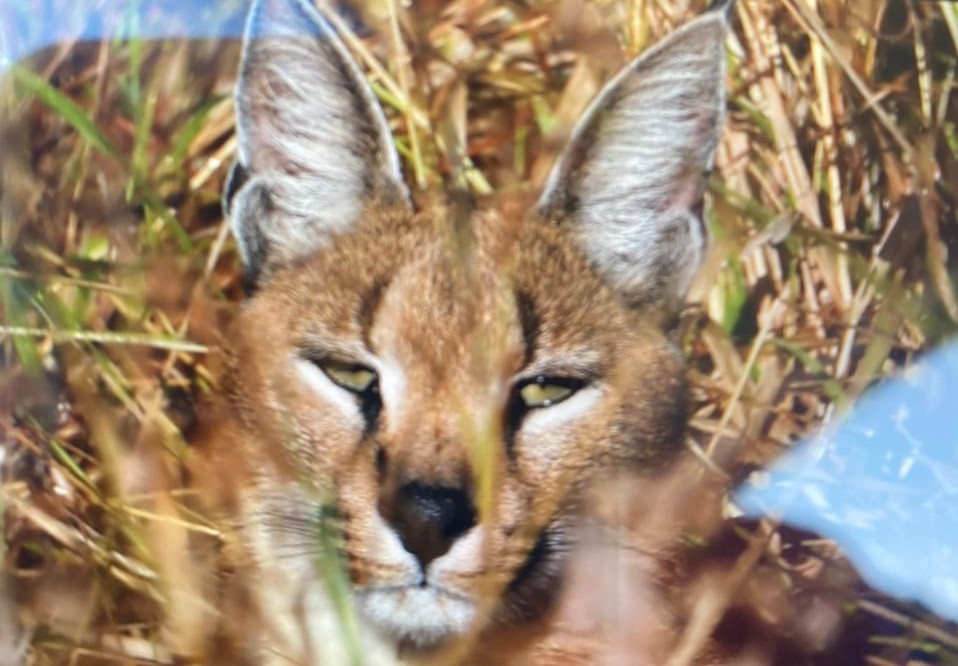
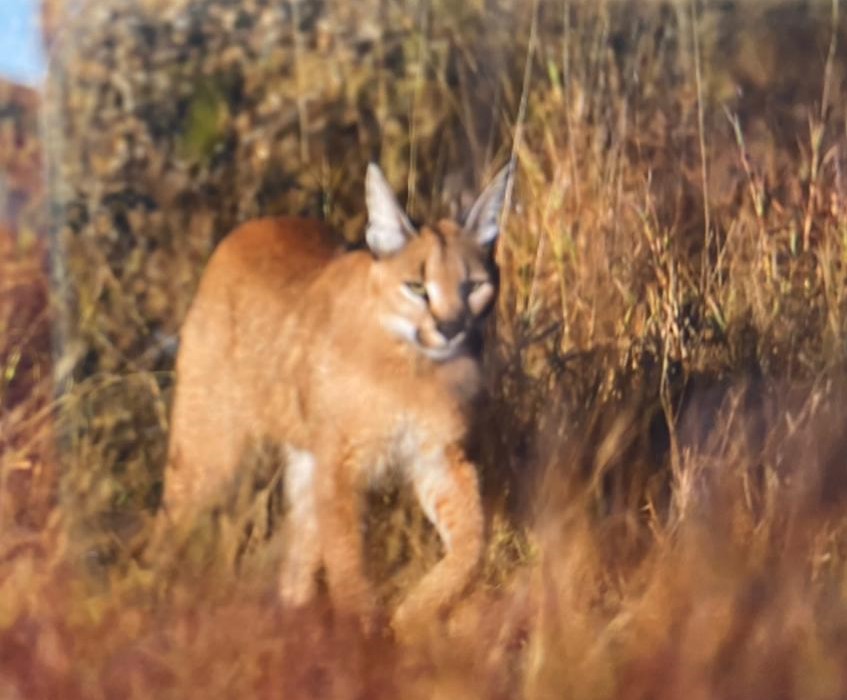
Kruger Sightings
@LatestKruger
7:50am
1 Caracal on the move
H6, 2km W of N'wanetsi Picnic Spot
Near Satara
5/5
Tinged by Morne
8:32 AM · Jun 8, 2021
Please check Needs Attention pre-booking: https://africawild-forum.com/viewtopic.php?f=322&t=596
- Lisbeth
- Site Admin
- Posts: 67551
- Joined: Sat May 19, 2012 12:31 pm
- Country: Switzerland
- Location: Lugano
- Contact:
Re: Caracal
"Education is the most powerful weapon which you can use to change the world." Nelson Mandela
The desire for equality must never exceed the demands of knowledge
The desire for equality must never exceed the demands of knowledge
- Peter Betts
- Posts: 3084
- Joined: Fri Jun 01, 2012 9:28 am
- Country: RSA
- Contact:
- Richprins
- Committee Member
- Posts: 76082
- Joined: Sat May 19, 2012 3:52 pm
- Location: NELSPRUIT
- Contact:
Re: Caracal
Please check Needs Attention pre-booking: https://africawild-forum.com/viewtopic.php?f=322&t=596
- Richprins
- Committee Member
- Posts: 76082
- Joined: Sat May 19, 2012 3:52 pm
- Location: NELSPRUIT
- Contact:
Re: Caracal
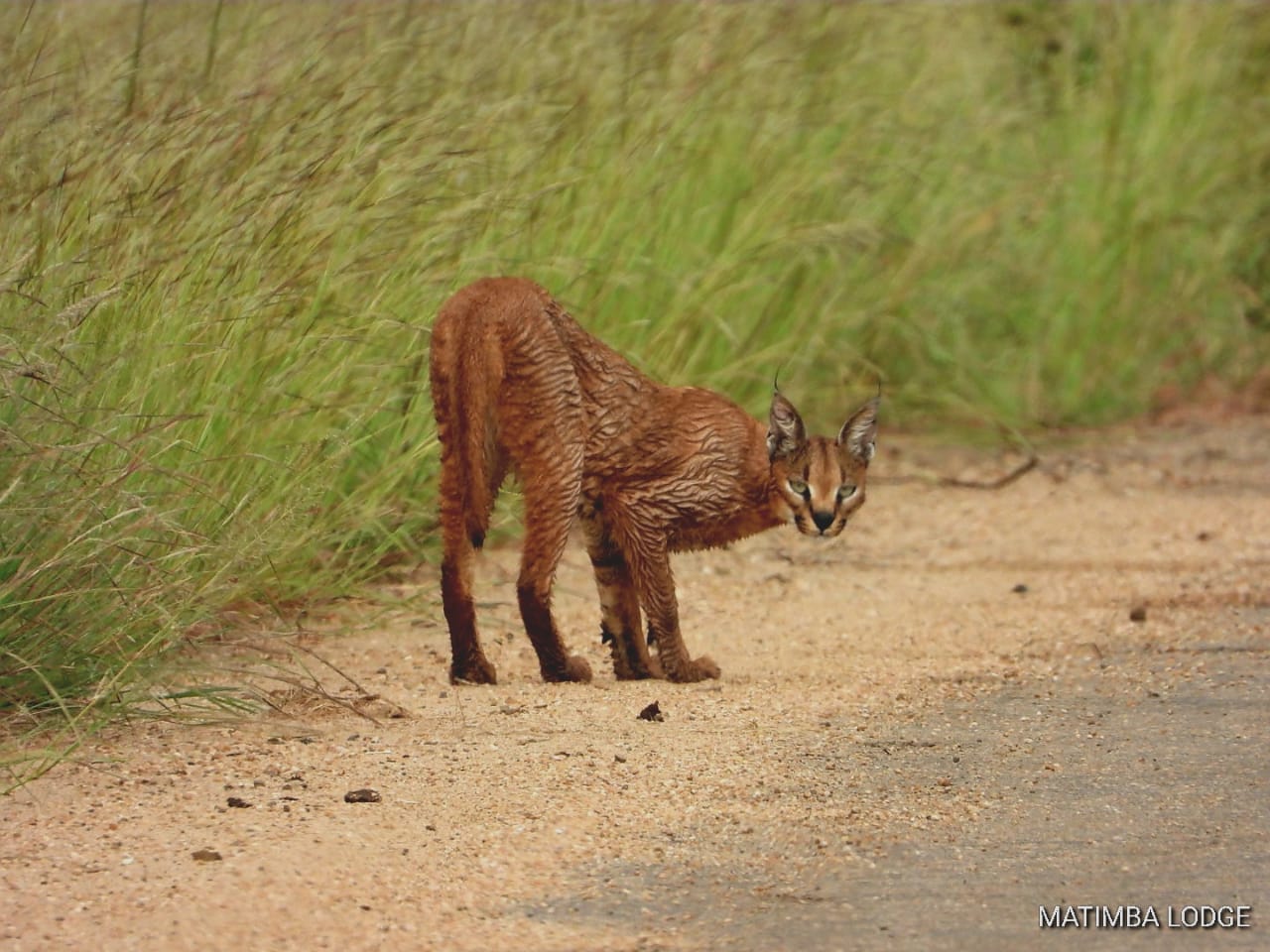
Kruger Sightings
@LatestKruger
7:40am
1 Caracal on the move
H6, 2.4 km E of H1-3
Near Satara
3/5
Tinged by Alberto - Matimba Bush Lodge
8:18 AM · Feb 1, 2022
Last edited by Richprins on Thu Mar 28, 2024 11:27 am, edited 1 time in total.
Please check Needs Attention pre-booking: https://africawild-forum.com/viewtopic.php?f=322&t=596
- Lisbeth
- Site Admin
- Posts: 67551
- Joined: Sat May 19, 2012 12:31 pm
- Country: Switzerland
- Location: Lugano
- Contact:
Re: Caracal
Brilliant shot by Alberto 
"Education is the most powerful weapon which you can use to change the world." Nelson Mandela
The desire for equality must never exceed the demands of knowledge
The desire for equality must never exceed the demands of knowledge
- Lisbeth
- Site Admin
- Posts: 67551
- Joined: Sat May 19, 2012 12:31 pm
- Country: Switzerland
- Location: Lugano
- Contact:
Re: Caracal
‘Studying a ghost’: In Cape Town, urban caracals give researchers lots to ponder
by Grace Hansen on 21 March 2022
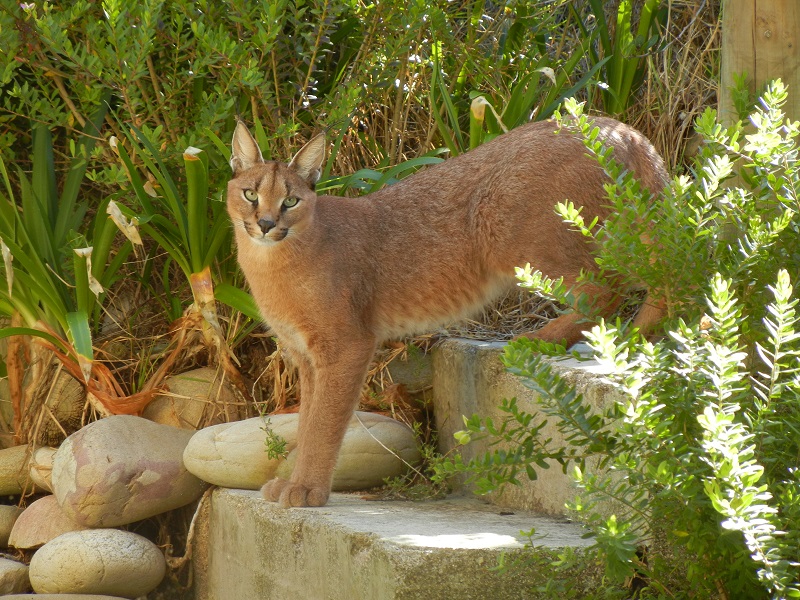
A caracal descends stairs. Image courtesy of Anya Adendorff/Urban Caracal Project.
Even in the isolated, scrubby plains of the savanna, spotting the black ear tufts of a caracal prowling nearby remains a rare opportunity. The wild cat, sometimes known as the lynx of the desert, prefers elusive solitude. But lately, residents of Cape Town, South Africa, have noticed the predators somewhere new: in their own neighborhoods.

A caracal sits at an intersection in Cape Point. Image courtesy of Luke Nelson/Urban Caracal Project.
To better understand this phenomenon, Laurel Serieys, a biologist at the University of Cape Town, launched the Urban Caracal Project in 2014.
“Nothing was known about the caracals in Table Mountain/Cape Town, and one of my key research interests is how urbanization impacts wild cat populations,” Serieys says. “So, Cape Town caracals provided a unique opportunity to investigate something I’m very passionate about. Additionally, at the time, very little was known about caracals generally.”
To that end, Serieys and Gabriella R. M. Leighton, also of UCT, along with other researchers based in Africa and Europe, began a multiyear study examining how Cape Town’s ever-swelling urban edge impacts the carnivores.
Globally, caracals (Caracal caracal) roam across a massive range, from India and the Middle East to Central and Southern Africa, according to global conservation authority the IUCN. However, their populations in urban areas face unique threats. For Serieys and her team, resolving or mitigating those threats has become a driving force behind their research project, the findings of which they published last year.
To better understand the urban caracal population, the scientists trapped 26 caracals and fitted them with GPS collars between November 2014 and September 2016.
“It’s amazing to be able to see such an elusive wild cat up close, because as caracal researchers we do not get to see our study animal that often,” Leighton says. “We only have an hour to spend collecting all the samples we need and fitting the collar … it’s always incredibly exciting and special.”

A pair of caracals. Image courtesy of Anya Adendorff/Urban Caracal Project.
Serieys agrees, adding that the cats’ elusiveness and intelligence made the trapping process especially difficult.
“I loved working with caracals. From the moment I started to explore the areas where they lived in Cape Town, I was captivated by them,” Serieys says. “In some ways, when I started, it felt like I was studying a ghost.”
Still, to fully analyze the lifestyle of urban caracals, it is first necessary to understand the cats who live deep in wilderness areas.
Unlike the lynx, with which its commonly associated, the caracal has a solid, tan coat and represents its own genus in the cat family. Caracals stand only 40-50 centimeters (16-20 inches) at the shoulder, and weigh 9-18 kilograms (20-40 pounds) — only a third as much as a cougar and less than a quarter of the weight of a lion.
Despite their relatively small size, however, caracals prey on a variety of much larger animals, such as the kudu (Tragelaphus imberbis), an antelope that weighs at least five times as much. The cats also go after small prey such as birds, thanks to their ability to leap 3.5 meters (12 feet) into the air. Additionally, although their population isn’t considered threatened or endangered, the cats are still very difficult to spot. They maintain a reputation for being secretive and solitary.
In the wild, caracals generally hunt at night, but not so in urban areas. Here, Leighton and her team found that 63.1% of a caracal’s feedings happened during the daytime. In contrast, caracals in the wild feed at night 72% of the time.

A caracal walks down the side of a paved road. Image courtesy of Yolande Oelsen/Urban Caracal Project.
This observation, although surprising to the scientists, was eventually explained as the team uncovered more information.
“While the trend was unexpected,” Leighton says, “the most important caracal prey items in the urban region are more active during daylight.” In fact, three of the caracal’s go-to meal species — vlei rats (Otomys irroratus), helmeted guineafowl (Numida meleagris) and striped grass mice (Lemniscomys striatus) — are all most active during the day.
Another significant difference between wildland and urban caracals is how they avoid detection. While rural caracals seem to prefer to remain hidden from humans, urban caracals have adopted a “hide in plain sight” approach that allows them to forage on the edges of the city during the daytime, but still remain largely unseen.
A caracal mother and her kitten forage in Cape Point. Image courtesy of the Urban Caracal Project.
But not all urban edges are created equal as far as the caracals are concerned, according to Serieys and her team. They found caracals don’t frequent the commercial pine plantations on the outskirts of Cape Town, for example. Cultivated vineyards, however, are very popular with the species.
“Vineyards provide patches of closed cover between and alongside vines not often frequented by people, where most feeding events were located,” Leighton wrote in her research.
As well as the prey they provide, these patches of closed cover are noteworthy not only for the current caracal population, but also for the future. If city planners and scientists worked together to create or retain “adequate greenbelts,” then the caracals could access relatively safe spaces beyond the urban edge, according to the research.
Still, even the vineyards aren’t without risk. Two of the animals the Urban Caracal Project team studied died due to ingesting rat pesticide that landowners had distributed to keep rodents away from agricultural crops, which Serieys documented in a 2019 study. To combat this risk, the group in their 2021 paper recommended “reduced use of pesticides and maintenance of cover, particularly around vineyards and at the urban edge.” The latest study by the team suggests that pollutant exposure specifically poses a major risk to the animals hunting and living near the urban edge.
Overall, Leighton says, even though caracals are a resilient and innovate species, urban encroachment poses a real threat.

A caracal sporting a collar and tags. Image courtesy of Laurel Serieys/Urban Caracal Project.
“The public should understand that while Cape Town’s caracals are impressively adaptable and able to persist around areas that are highly urbanized, they are still up against many threats that, if not faced and mitigated, will result in their local extinction,” Leighton says. “I think people should appreciate that caracals are the largest remaining predator in the area, and that anything we do to understand their ecology and to conserve them will also benefit the incredibly diverse array of animal and plant species in this biodiversity hotspot. They are therefore an ‘umbrella species’ that is very much worth conserving.”
A caracal mother and her kitten navigate a road. Video courtesy of Nick Graves/Urban Caracal Project.
by Grace Hansen on 21 March 2022

A caracal descends stairs. Image courtesy of Anya Adendorff/Urban Caracal Project.
- Researchers have spent years trapping and tracking the elusive caracal on the edges of the South African city of Cape Town to better understand the needs of these wild cats.
- Urban caracals have adapted their behavior in a number of ways to survive on the margins of the city, including hunting more during the day.
- Although highly adaptable, urban caracals face many challenges, including ingesting rat poison.
- Researchers recommend more greenways to allow the animals to survive in these heavily modified environments.
Even in the isolated, scrubby plains of the savanna, spotting the black ear tufts of a caracal prowling nearby remains a rare opportunity. The wild cat, sometimes known as the lynx of the desert, prefers elusive solitude. But lately, residents of Cape Town, South Africa, have noticed the predators somewhere new: in their own neighborhoods.

A caracal sits at an intersection in Cape Point. Image courtesy of Luke Nelson/Urban Caracal Project.
To better understand this phenomenon, Laurel Serieys, a biologist at the University of Cape Town, launched the Urban Caracal Project in 2014.
“Nothing was known about the caracals in Table Mountain/Cape Town, and one of my key research interests is how urbanization impacts wild cat populations,” Serieys says. “So, Cape Town caracals provided a unique opportunity to investigate something I’m very passionate about. Additionally, at the time, very little was known about caracals generally.”
To that end, Serieys and Gabriella R. M. Leighton, also of UCT, along with other researchers based in Africa and Europe, began a multiyear study examining how Cape Town’s ever-swelling urban edge impacts the carnivores.
Globally, caracals (Caracal caracal) roam across a massive range, from India and the Middle East to Central and Southern Africa, according to global conservation authority the IUCN. However, their populations in urban areas face unique threats. For Serieys and her team, resolving or mitigating those threats has become a driving force behind their research project, the findings of which they published last year.
To better understand the urban caracal population, the scientists trapped 26 caracals and fitted them with GPS collars between November 2014 and September 2016.
“It’s amazing to be able to see such an elusive wild cat up close, because as caracal researchers we do not get to see our study animal that often,” Leighton says. “We only have an hour to spend collecting all the samples we need and fitting the collar … it’s always incredibly exciting and special.”

A pair of caracals. Image courtesy of Anya Adendorff/Urban Caracal Project.
Serieys agrees, adding that the cats’ elusiveness and intelligence made the trapping process especially difficult.
“I loved working with caracals. From the moment I started to explore the areas where they lived in Cape Town, I was captivated by them,” Serieys says. “In some ways, when I started, it felt like I was studying a ghost.”
Still, to fully analyze the lifestyle of urban caracals, it is first necessary to understand the cats who live deep in wilderness areas.
Unlike the lynx, with which its commonly associated, the caracal has a solid, tan coat and represents its own genus in the cat family. Caracals stand only 40-50 centimeters (16-20 inches) at the shoulder, and weigh 9-18 kilograms (20-40 pounds) — only a third as much as a cougar and less than a quarter of the weight of a lion.
Despite their relatively small size, however, caracals prey on a variety of much larger animals, such as the kudu (Tragelaphus imberbis), an antelope that weighs at least five times as much. The cats also go after small prey such as birds, thanks to their ability to leap 3.5 meters (12 feet) into the air. Additionally, although their population isn’t considered threatened or endangered, the cats are still very difficult to spot. They maintain a reputation for being secretive and solitary.
In the wild, caracals generally hunt at night, but not so in urban areas. Here, Leighton and her team found that 63.1% of a caracal’s feedings happened during the daytime. In contrast, caracals in the wild feed at night 72% of the time.

A caracal walks down the side of a paved road. Image courtesy of Yolande Oelsen/Urban Caracal Project.
This observation, although surprising to the scientists, was eventually explained as the team uncovered more information.
“While the trend was unexpected,” Leighton says, “the most important caracal prey items in the urban region are more active during daylight.” In fact, three of the caracal’s go-to meal species — vlei rats (Otomys irroratus), helmeted guineafowl (Numida meleagris) and striped grass mice (Lemniscomys striatus) — are all most active during the day.
Another significant difference between wildland and urban caracals is how they avoid detection. While rural caracals seem to prefer to remain hidden from humans, urban caracals have adopted a “hide in plain sight” approach that allows them to forage on the edges of the city during the daytime, but still remain largely unseen.
A caracal mother and her kitten forage in Cape Point. Image courtesy of the Urban Caracal Project.
But not all urban edges are created equal as far as the caracals are concerned, according to Serieys and her team. They found caracals don’t frequent the commercial pine plantations on the outskirts of Cape Town, for example. Cultivated vineyards, however, are very popular with the species.
“Vineyards provide patches of closed cover between and alongside vines not often frequented by people, where most feeding events were located,” Leighton wrote in her research.
As well as the prey they provide, these patches of closed cover are noteworthy not only for the current caracal population, but also for the future. If city planners and scientists worked together to create or retain “adequate greenbelts,” then the caracals could access relatively safe spaces beyond the urban edge, according to the research.
Still, even the vineyards aren’t without risk. Two of the animals the Urban Caracal Project team studied died due to ingesting rat pesticide that landowners had distributed to keep rodents away from agricultural crops, which Serieys documented in a 2019 study. To combat this risk, the group in their 2021 paper recommended “reduced use of pesticides and maintenance of cover, particularly around vineyards and at the urban edge.” The latest study by the team suggests that pollutant exposure specifically poses a major risk to the animals hunting and living near the urban edge.
Overall, Leighton says, even though caracals are a resilient and innovate species, urban encroachment poses a real threat.

A caracal sporting a collar and tags. Image courtesy of Laurel Serieys/Urban Caracal Project.
“The public should understand that while Cape Town’s caracals are impressively adaptable and able to persist around areas that are highly urbanized, they are still up against many threats that, if not faced and mitigated, will result in their local extinction,” Leighton says. “I think people should appreciate that caracals are the largest remaining predator in the area, and that anything we do to understand their ecology and to conserve them will also benefit the incredibly diverse array of animal and plant species in this biodiversity hotspot. They are therefore an ‘umbrella species’ that is very much worth conserving.”
A caracal mother and her kitten navigate a road. Video courtesy of Nick Graves/Urban Caracal Project.
"Education is the most powerful weapon which you can use to change the world." Nelson Mandela
The desire for equality must never exceed the demands of knowledge
The desire for equality must never exceed the demands of knowledge
- Peter Betts
- Posts: 3084
- Joined: Fri Jun 01, 2012 9:28 am
- Country: RSA
- Contact:
Re: Caracal
Looking at that SAD image of a Caracal with TWO Oversized Ear Tags and an OVERTHICK & TIGHT Collar makes me ill >> How does this cat operate under such INHUMANE conditions >> Science like this is just as bad or even worse than animals used in Beauty Product Testing >> another EPIC FAIL with Humans taking the lead yet again






- Richprins
- Committee Member
- Posts: 76082
- Joined: Sat May 19, 2012 3:52 pm
- Location: NELSPRUIT
- Contact:
Re: Caracal
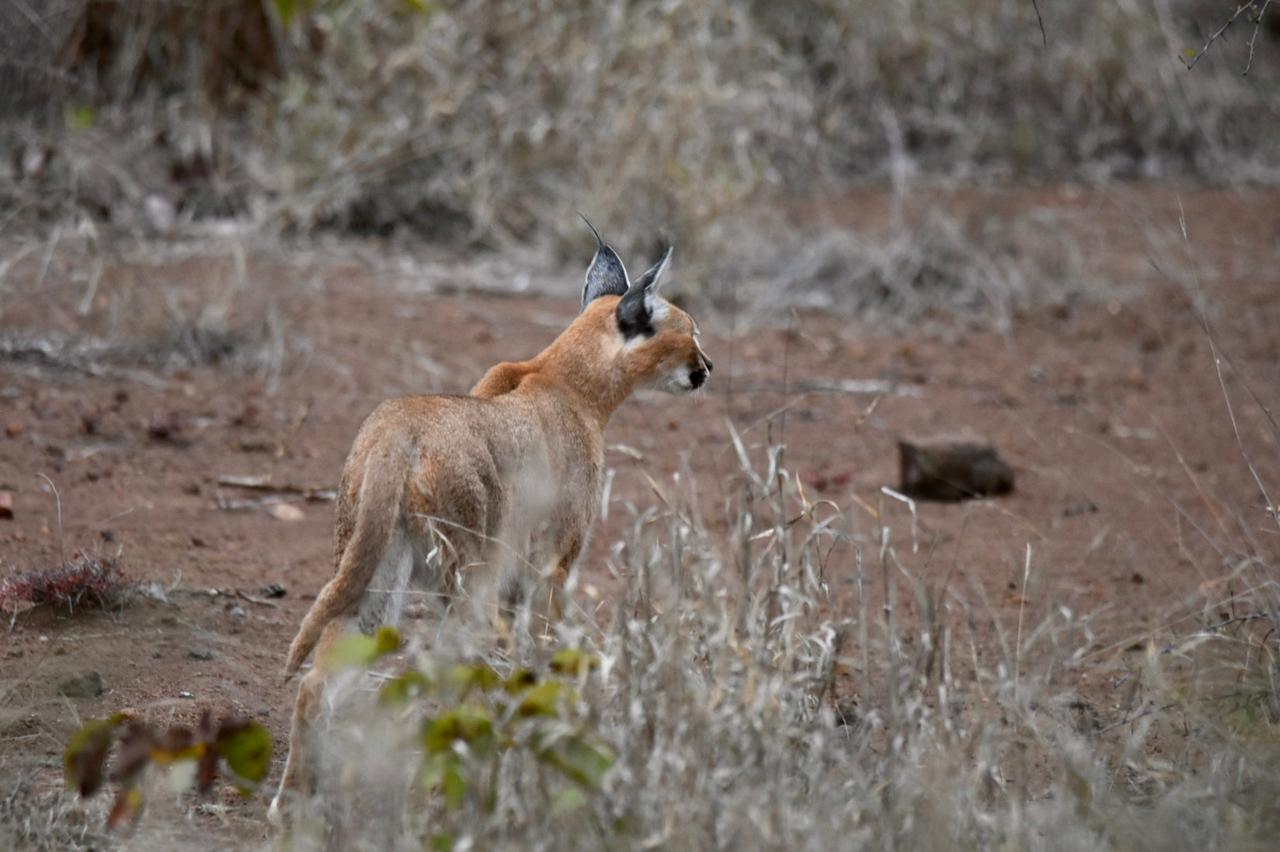
Kruger Sightings
@LatestKruger
Yesterday
5:10pm
Caracal
H8, halfway to Olifants Camp
5/5
Tinged by Greg
7:05 AM · Jul 22, 2022
Please check Needs Attention pre-booking: https://africawild-forum.com/viewtopic.php?f=322&t=596


